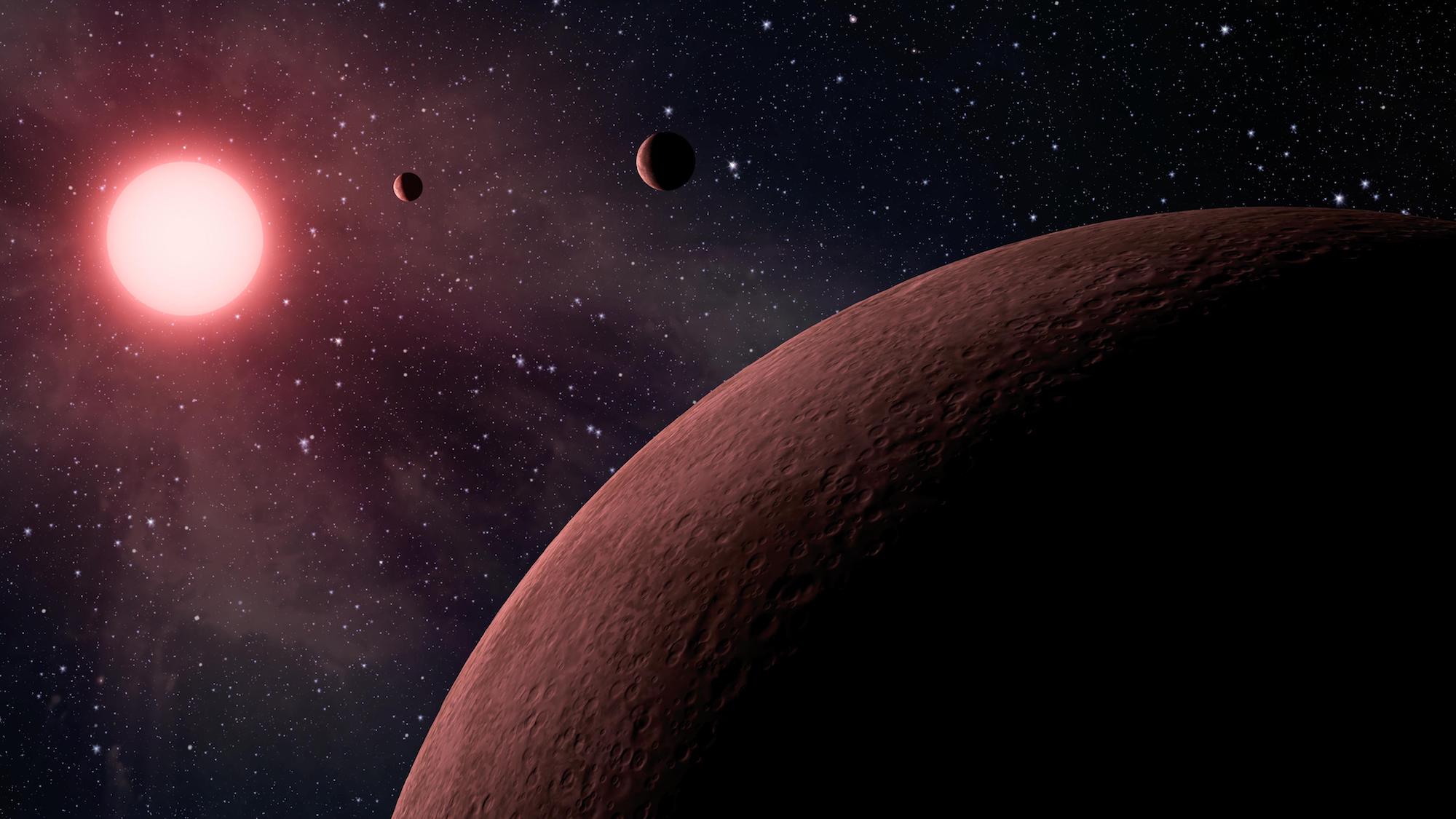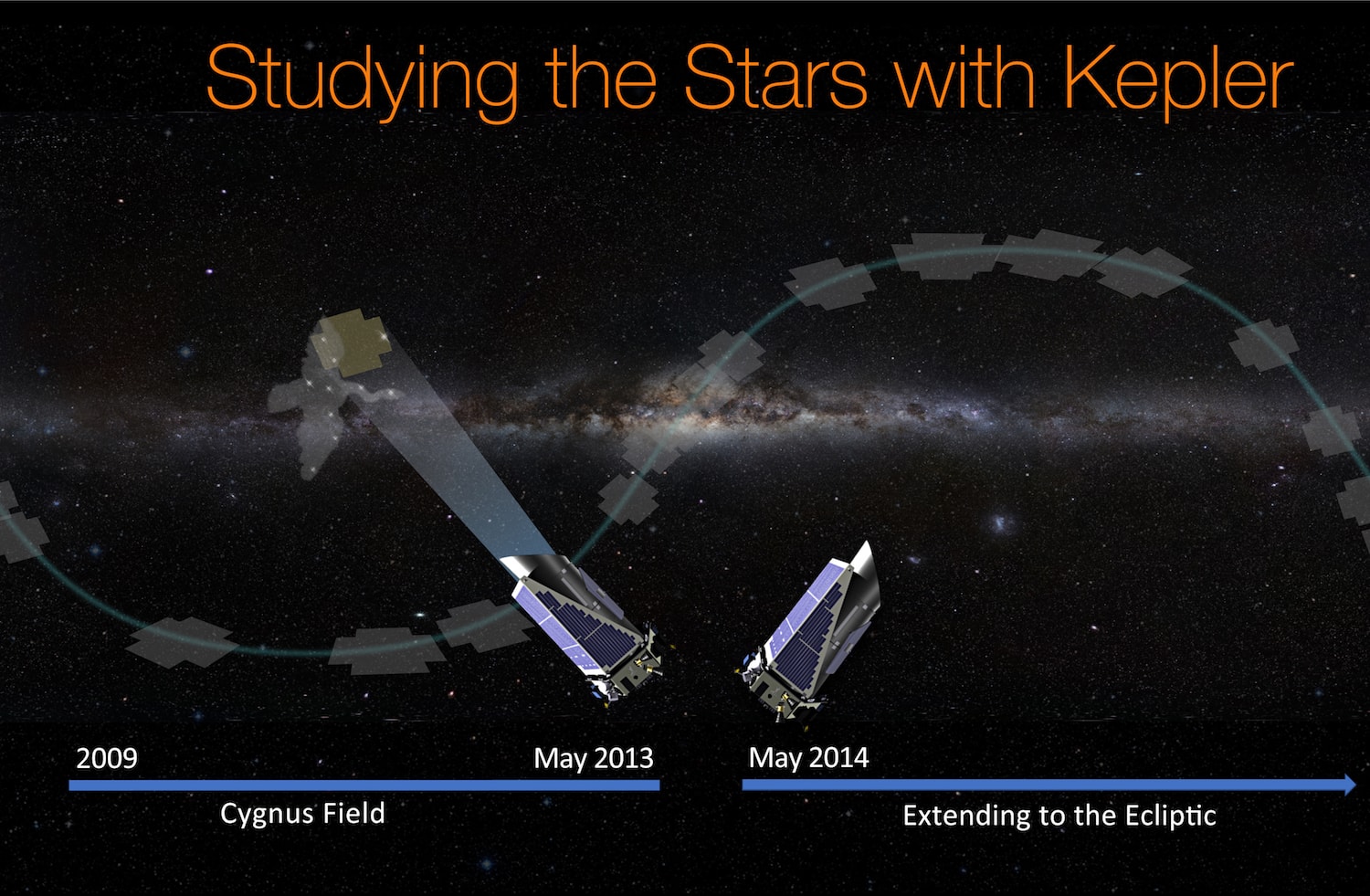Kepler Unveils A New Crop Of Exoplanets
7:21 minutes

This week, scientists from NASA’s Kepler/K2 mission unveiled their latest set of planet-hunting results. The additions to the exoplanet catalog include hundreds of new planet candidates, and 10 finds that could be rocky planets within the habitable zone of their stars.
Susan Thompson, Kepler research scientist at the SETI Institute, says the new catalog is the “foundation for directly answering one of astronomy’s most compelling questions: How many planets like our Earth are in the galaxy?” So far, the mission has identified over 4,000 potential distant worlds in the Milky Way, with 2,335 of those candidates confirmed as actual exoplanets.

Susan Thompson is Kepler research scientist for the SETI Institute, at NASA’s Ames Research Center in Mountain View, California.
IRA FLATOW: This is Science Friday. I’m Ira Flatow. This week, scientists from NASA’s Kepler mission unveiled their latest set of planet hunting results, including hundreds of new planet candidates, and 10 that could be rocky planets within that Goldilocks, that habitable zone of their stars. And so far, the mission has identified over 4,000 potential distant worlds.
Susan Thompson, Kepler research scientist at the SETI Institute, and lead author of the new research, joins me from the campus of NASA Ames in Silicon Valley. Welcome to the program.
SUSAN THOMPSON: Hi.
IRA FLATOW: So how many planets is this now?
SUSAN THOMPSON: We’re up to just over about 4,000 planet candidates once you add this catalog in, though we’ve only confirmed about 2,030 or so of them.
IRA FLATOW: Wow, wow. And there’s 10 that could be rocky planets.
SUSAN THOMPSON: Yeah. With this catalog we were able to extend out and find really long period planets that are in the habitable zone, and really small planets that could be rocky, they’re about the same size as the Earth, using the Kepler spacecraft.
IRA FLATOW: Let’s refresh our memory for us, would you please? About how Kepler finds the planets that are so far away?
SUSAN THOMPSON: So Kepler is like a big bucket for light. We’re just measuring how bright the stars are. And what we’re looking for is the planet passing in front of the star, and that causes the star to just suddenly look a little bit dimmer for just an hour or two, or maybe up to 12 hours. And we see that happen several times, and once we see that happen several times we call it a planet candidate. And that’s what we were collecting in this catalog.
IRA FLATOW: And so these 200 planets, are they all from the same part of the sky or are they all spread out all over?
SUSAN THOMPSON: Yeah, this was all from Kepler’s original mission where we were looking at the part of the sky near Cygnus, the swan.
IRA FLATOW: So you have 4,000 candidates in total from this one area?
SUSAN THOMPSON: That’s right, 4,000 candidates from just this one part of the sky.
IRA FLATOW: So there have got to be– if this is 4,000 from a tiny little speck in the sky, there must be untold numbers of candidates out there.
SUSAN THOMPSON: Exactly. That means there are billions of planets out there. There are more planets out there than there are stars, which just completely blows my mind when you go out there and look at the stars. You look up at those stars, and if only you could see the planets you would see more planets than you do stars.
IRA FLATOW: Wow. And the possibility of life on any of these exoplanets?
SUSAN THOMPSON: Oh, there’s always possibilities. That’s not what we were able to measure with the Kepler spacecraft. But that’s what people are going to continue to work towards, is can we measure to see– can we find oxygen on these planets. Can we find ones that are very similar to the Earth? That possibly, maybe, that somebody’s living on them.
IRA FLATOW: So all we can pretty much deduce is their size and their distance from their star so far.
SUSAN THOMPSON: You also can tell– from that distance we can tell about how warm they are, which is why we know they’re in the habitable zone. Because when you add in the temperature of the star and how far away it is, then we can say, oh, is this planet warm? You know, someplace you’d want to live, or is it going to be freezing cold because it’s too far away from the star.
IRA FLATOW: So you have all of these 4,000 candidates. How do you decide which ones are the better ones for living in the zone that might have life in it?
SUSAN THOMPSON: Well, we’re picking the ones that are most similar to the Earth, because the Earth is the only place we know has life right now. And so that’s how we picked it. So we pick those that show that they’re about the same size as the Earth. So we believe there might be a surface that you could actually stand on. And we hope that these planets therefore can hold an atmosphere as well. But we don’t know that. And then we are also picking those that are the right distance away from the star. So it’s at just the right temperature.
IRA FLATOW: Now, if you need the planet to move between the star and the telescope to detect it, does that mean there are probably even more planets out there that are just not in the right orientation for us to see them?
SUSAN THOMPSON: You’re exactly right. So we only see about, for Sun-like stars, something like 1 in 200 of planets transit. So that means that for every one that we see, there’s 200 more out there that we didn’t see.
IRA FLATOW: I’m trying to digest.
SUSAN THOMPSON: So yeah, we’ve found 10 but that means there’s 200 times 10, 2,000.
IRA FLATOW: Wow.
SUSAN THOMPSON: That’s simple math.
IRA FLATOW: Does that blow your mind as much as it does mine, when you think about it?
SUSAN THOMPSON: Absolutely. But you know, I’ve been thinking about this for a while now. This is what Kepler was designed to do. And so we’ve been hoping that we’d find these so that we can start to understand how many planets are actually out there that are similar to the Earth.
IRA FLATOW: So you say that’s what Kepler has been designed to do. Has its mission changed recently at all?
SUSAN THOMPSON: Yeah. Kepler, after it spent four years looking at that Cygnus field, went off and is now pointing at fields along the ecliptic. And now it’s still looking for exoplanets, but it’s also doing a whole bunch of other types of astrophysics from supernova down to asteroids. And so, when I say the ecliptic, I guess I should clarify. That’s the part of the sky that has your zodiac symbols in it.
IRA FLATOW: Thank you.
SUSAN THOMPSON: So those are the constellations many of you probably know about. So it’s looking at different fields, each field for about 80 days. And from that, we can still find short period planets. And so they’re continue to find them, and they’re looking for planets around some of the smaller stars now.
IRA FLATOW: So would it be safe to say you’re still sifting through all that data that you still have?
SUSAN THOMPSON: Well the data from the original mission, we’re basically done sifting through it. We’ve put all of our best minds and efforts at getting through that data, I mean this was our last search. But people will continue to use these results and the data and keep finding new gems in it. I don’t think Kepler is done at all in that way.
IRA FLATOW: How long is Kepler’s lifetime, do we expect?
SUSAN THOMPSON: You know you’ll have to really ask someone who knows well, but I just– I expect that we will make it through quarter 17/18. It’s a little unsure about when Kepler runs out of fuel. So there’s about another year that we’re collecting data using Kepler.
IRA FLATOW: And the new Webb telescope, will that do anything that Kepler can’t?
SUSAN THOMPSON: Oh yeah. James Webb Space Telescope is– well, in terms of exoplanets, what people are hoping to use it for is to start to actually measure the atmospheres of some of these exoplanets. So it’s not trying to find the exoplanets but study them further. Can you figure out is there oxygen, for instance, on the surface of one of these planets.
IRA FLATOW: But it will specialize in the infrared section, right?
SUSAN THOMPSON: Correct. That’s what it’s going to do.
IRA FLATOW: So you’ll use Kepler to get the candidates narrowed down. And then when the Web telescope comes online, everybody’s fingers crossed, that will then focus on seeing if there’s a real atmosphere on any of those planets. Wow.
SUSAN THOMPSON: Yeah, that’s about right. Yeah.
IRA FLATOW: Wow. You have such a boring job, Dr. Thompson.
SUSAN THOMPSON: Not boring at all.
IRA FLATOW: I’ll bet.
SUSAN THOMPSON: I’m super excited.
IRA FLATOW: I’m sure you are. Thank you very much for taking the time to be with us today.
SUSAN THOMPSON: You’re welcome.
IRA FLATOW: Susan Thompson, Kepler research scientist at SETI Institute. And we’ll check back in with her.
Copyright © 2017 Science Friday Initiative. All rights reserved. Science Friday transcripts are produced on a tight deadline by 3Play Media. Fidelity to the original aired/published audio or video file might vary, and text might be updated or amended in the future. For the authoritative record of ScienceFriday’s programming, please visit the original aired/published recording. For terms of use and more information, visit our policies pages at http://www.sciencefriday.com/about/policies/
As Science Friday’s director and senior producer, Charles Bergquist channels the chaos of a live production studio into something sounding like a radio program. Favorite topics include planetary sciences, chemistry, materials, and shiny things with blinking lights.